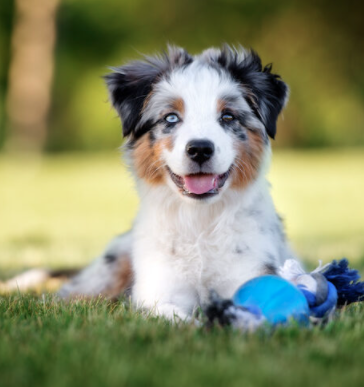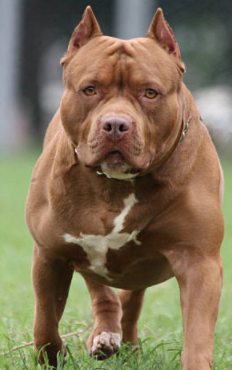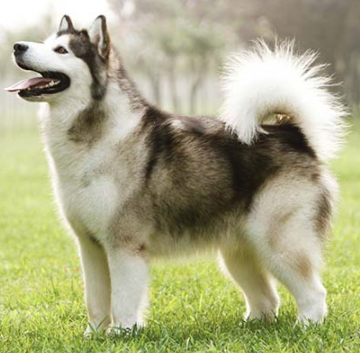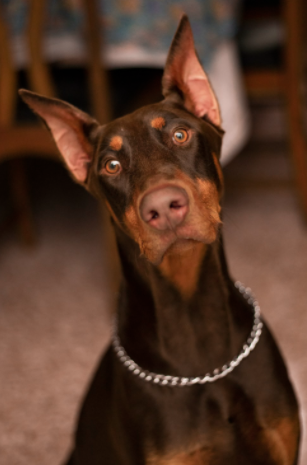Best Dog Breeds for Apartments: Dogs are deservedly considered the most popular pets in the world. Due to the huge variety of breeds, each person can choose a pet that is suitable in size, temperament, and appearance.
Best Dog Breeds for Apartments
This article describes the most popular Best Apartment Dogs that you can have in an apartment.

How to Choose a Dog for an Apartment
Before buying a puppy, you need to weigh the pros and cons. Take into account the breed characteristics and other qualities of the future family member.
What you should pay attention to:
- The size of the animal must correspond to the area of the apartment. It is worth considering the dimensions of an adult pet.
- It is necessary to choose a breed that matches the temperament of the owner. For active people, breeds of sports, hunting, and security purposes are suitable. It is better for calm and lazy people to pay attention to decorative dogs that do not require constant stress and long walks.
- An important factor is the presence of other pets and children in the house.
- Tendency to allergies.
- The purity of the breed and the cost of the pet.
- Tendency to constant barking.
The financial possibilities of the owner play an important role not only when buying a puppy but also in further maintenance. Spending on toys, care items, feeding, preventive examinations, and vaccinations should be taken into account.
Best Small Dogs for an Apartment Living
For small apartments, dwarf breeds are perfect. They eat little and do not take up much space. Adult dogs weigh from 1.5 to 10 kg, and height does not exceed 45 cm at the withers. Miniature pets do not need grueling walks and workouts. But at the same time, kids just need proper education and training.
1. Affenpinscher
Cheerful bearded pinschers quickly learn and adapt to life in an apartment. Suitable for people who spend most of their time at home. Dogs require constant attention and get bored alone.
2. Bison Frieze
Recommended for people prone to allergies. Wool has no smell; molting is almost imperceptible. Bichons are well-trained to remember commands. In the absence of education, they can show such qualities as dominance, cowardice, capriciousness.
3. Border terrier
English hunters have shown themselves to be excellent companions and family dogs. They get along well with children but do not tolerate the presence of other pets. For Borderers, other animals are the subject of hunting. The maximum weight of adults of the breed is 7 kg, height is up to 40 cm. Wool does not shed and does not cause allergies.
4. Boston Terrier
Real English gentlemen have a complaisant and kind disposition. In the absence of education, they show a tendency to dominate. The growth of adult dogs up to 40 cm, weight no more than 10 kg.
5. Brussels Griffon
Representatives of the species get along well with children and other pets. Adult dogs weigh up to 5 kg, height 18–20 cm. They are well trained and trained. The only negative is a pronounced protective instinct.
6. Welsh terrier
Mini Airedale Terriers weigh only 9-9.5 kg. The coat is hard and needs special care. Suitable for an apartment but require regular walks and active games. Excitable and have a tendency to dig.
7. Jack Russell Terrier
Jacks are suitable for active people. Jack Russell Terriers need regular exercise and walks. Easy to train and keep. Does not require specific training skills, therefore suitable for beginners.
8. Yorkshire Terrier
Representatives of terriers are very obedient and cheerful. They get along well with all family members, but they are jealous of other pets. Wool requires quality care and regular combing.
9. Chinese Crested
Separate two directions long-haired and short-haired. Wool has no smell; molting is practically absent. Capricious and difficult to train. Extremely sociable, therefore not suitable for busy people.
10. Greyhound
Very loyal and sensitive pets. Strongly attached to the owner emotionally. The weight of adult animals is up to 5 kg, and height is up to 40 cm.
11. Maltese dog
One of the oldest decorative breeds. The Maltese make excellent companions who are ideal for keeping in an apartment. Bolonkas are intelligent and highly trainable. Minus the tendency to bark unreasonably.
12. Pug
It is considered one of the most successful pets for small apartments. Pug is suitable even for inexperienced owners. They can adapt to the rhythm of the owner’s life and do not need frequent walks and prolonged physical exertion. The disadvantage is the tendency to obesity, so it is necessary to monitor nutrition and observe the feeding regimen.
13. Papillon
Very friendly and energetic Papillons need constant attention. They get along well with children and other pets. They do not tolerate loneliness, and they can fall into a prolonged depression. A distinctive external feature is the large ears covered with long hair.
14. Pekingese
Pekingese, like the Maltese, is one of the oldest decorative breeds. Suitable for homebodies, as they do not need long walks. Long hair requires quality care. Some owners trim their pets to avoid daily brushing.
15. Pomeranian Spitz
The most popular decorative breed. The breed rating has risen due to the personal qualities of pets and unusual haircuts. Spitz, cut like a teddy bear, will not leave indifferent any animal lover. Good for small apartments. Requires patience during training and education. Bear cubs can be purchased for apartments.
16. Chihuahua
Due to their small size and unusual appearance, the breed has not lost popularity for several decades. Young animals are well trained to get along with children and pets. Of the minuses, poor stress resistance and poor health are distinguished.
17. Shih Tzu
Representatives of the breed are ideal for beginners and couples with children. They make good companions with a stable psyche. Shih Tzu has good health, does not bark, does not show aggression towards strangers.
Best Medium-sized Dog Breeds for Apartment Living
This group includes dogs that do not exceed 12–25 kg with a maximum height of 30 to 60 cm. Representatives of these breeds can live both in an apartment and on the street.
18. Australian shepherd
Representatives of the breed are well trained. Shepherd dogs need long walks and loads, so the breed is unsuitable for people with reduced activity. Of the minuses, complex hair care, dominant character traits are distinguished.
19. English bulldog
Despite their impressive muscles, bulldogs are pathologically lazy. They will not appreciate long walks, as well as excessive loads. Only apartment maintenance is recommended. Cons Weak immunity, tendency to overeat.
20. Basenji
Representatives of the breed do not know how to bark. Emotions are manifested in the form of folds on the muzzle and a wrapped tail. Smart and loyal Basenjis do not tolerate loneliness separation from the owner. It is recommended to dress the animals during winter walks, as they do not tolerate frost well.
21. Border Collie
It has a well-developed intellect, perfectly amenable to training. Suitable for professional breeders beginners. Long walks, jogging, and exercise are necessary when keeping a border collie in an apartment.
22. Bull Terrier
Representatives of the breed are distinguished by a stubborn character, prone to dominance. Despite these qualities, bull terriers lend themselves well to training and education. Very attached to the owner, do not tolerate loneliness.
23. Karelian-Finnish Laika
A distinctive feature of the breed is boundless devotion and inexhaustible energy. Long walks and regular exercise are recommended—cons tendency to bark, independence.
24. Corgi
Favorites of the English queen are perfect for apartment maintenance. Moderately curious and active dogs get along well with children and pets. Funny kids love walks, outdoor games. You can buy an English gentleman.
25. Mittelschnauzer
Cynologists recommend starting training from an early age. Otherwise, pets will grow up independent and stubborn. Standard Schnauzers need constant exercise long walks.
26. Pitbull
Active, hardy pit bulls are great for athletic, energetic people. Pets make good companions for training jogging. Representatives of the breed require competent socialization training.
27. Poodle
A poodle is a combination of intelligence, goodwill, devotion, and affection. Virtually no aggression towards others. Well suited for sociable, energetic people. They get along well with children and pets. Wool is hypoallergenic but requires quality care.
28. Samoyed
Despite their appearance, Samoyeds are very sensitive to manifestations of negative emotions. Smart, balanced dogs will suit self-confident people who can raise a wonderful friend and companion.
29. Siberian Husky
Energetic, excitable, but extremely sociable. Huskies have become popular due to their interesting coat color and iris. Blue-eyed merry fellows will become true friends, transferred assistants for their master.
30. Staffordshire terrier
Members of the species require tight behavioral control and early training. Staff can be aggressive towards other pets and strangers. Suitable only for experienced, patient people. With the right upbringing, they grow into devoted, selfless guards. Staffordshires are very attached to the owner and household members.
31. Chow chow
Chow has a unique appearance: a thick mane, dark purple tongue, dense and short ears, a serious look. Chow Chow is not suitable for beginners, as dogs are prone to aggressive dominance. Requires quality training and education.
32. Sharpey
Folded Asians are quite cute-looking. But the breed requires high-quality training education of social skills from early childhood. Shar-Pei is quite lazy does not like long walks physical exercises. Prone to overeating allergies.
Best Large Dog Breeds for an Apartment
Large breeds are suitable for keeping in an apartment with sufficient space, a walking yard, or an aviary. It is not recommended to leave such breeds without loads.
This group includes dogs whose height exceeds 60 cm and weighs 30 kg. It should be remembered that an eighty-kilogram dog will be cramped in a small apartment, so before buying a puppy, you must consider the size of an adult animal.
33. Akita-Inu
Despite the plush coat, representatives of the breed have well-developed muscles and need constant exercise. Akitas are proud jealous, so they rarely tolerate the presence of other pets on their territory. The coat sheds twice a year. Dogs need training and socialization skills from early childhood. You can buy a small Akita.
34. Alabai
Quite complex and stubborn pets. When kept in city apartments, constant physical activity is necessary. Despite the complex nature, Alabai lends itself well to training does not show excessive aggression towards others. Ideal watchmen, companions.
35. Alaskan Malamute
The appearance of Malamutes resembles Siberian Huskies, but they are completely different dogs. Malamutes are balanced, intelligent, but stubborn. Pets need to be trained from an early age. If in doubt, it is better to conduct training under the guidance of an experienced dog handler. Require regular exercise, long walks.
36. American bulldog
Representatives of the breed are distinguished by devotion and boundless love for their master. They get along well with children and other pets. Quite lazy and often suffer from obesity and food allergies.
37. Belgian Shepherd
Belgians are excellent watchmen and nannies. Active, intelligent pets are perfectly trainable. Requires walking and exercise. Prone to barking, very sad when alone.
38. German boxer
Beautiful muscular brutal have a rather complaisant character. Suitable for beginner dog breeders’ family people. Quickly get along with all family members’ pets.
39. Dogue de Bordeaux
Good-natured giants get along well with all family members despite their frightening appearance. Rarely bark, do not show unreasonable aggression towards strangers. It is advisable to start training and socialization from early childhood. During training, dogs may be stubborn or indifferent to commands. In case of difficulties, it is necessary to contact the cynologists.
40. Dalmatian
Spotted beauties, familiar from childhood, require competent training and education. In the absence of socialization, they become aggressive and uncontrollable. Not suitable for beginners and busy people. They love active, developing games. With the right approach, Dalmatians make loyal, devoted friends.
41. Doberman
Dobermans combine devotion, intelligence, love for the family, protective qualities, and a cheerful disposition. Dogs need proper education constant training. It is important to exclude any manifestations of aggression dominance. Well-bred Dobermans are ideal partners for games, hiking, jogging. Dobermans are quite clean neat.
42. Golden retriever
The breed is one of the best family dogs. Very good-natured, well-trained pets. Suitable for inexperienced owners, families with children, and other pets. They like long walks, games, physical exercises. Ideally, fit into the conditions of urban apartments. You can buy a retriever.
43. Irish wolfhound
Wolfhounds are not aggressive, peaceful pets despite their gigantic growth and frown. Due to the lack of aggression, they are not used for protection. Representatives of the breed have unlimited patience, and they will never offend children and other pets. Phlegmatic giants are well trained and trained. Large dogs need space for long walks.
44. Labrador retriever
The breed is recognized as a leader among family dogs. Thanks to their innate good nature and developed intelligence, Labradors are ideal for living in an urban environment. But it should be remembered that retrievers need long walks, active games, training, education. Labradors do not show aggression, are easy to train, suitable even for inexperienced dog breeders.
45. Weimaraner
Quite large representatives of the cops love active games, jogging, walking. Nature is uncomplicated, so the Weimaraner is well suited for beginners. Wool resembles velvet does not cause allergies. The cops who respond well to training are not prone to aggression.
46. German Shepherd
Characteristic features are devotion, obedience, learning ability, pronounced protective qualities. Germans get along well with children, as well as with other members of the family. They need proper training, moderate exercise, long walking. Unfortunately, due to the lack of control, more and more dogs have congenital joint defects. Therefore, the choice of a puppy should be taken responsibly and give preference only to experienced breeders with a good reputation.
47. German dog
Aristocratic giants, despite their powerful physique, are quite docile and friendly. Due to the size of dogs of this breed, it is not recommended to start in small apartments. Dogs have a calm, thoughtful character. The manifestation of aggression is due to pronounced protective qualities. They do not require specific care, but they get sick quite often. To maintain healthy beauty, dogs need high-quality feeding and training.
48. Newfoundland
The common name for the breed in Russia is “diver.” Newfoundlands are very fond of swimming and taking water treatments. A characteristic distinguishing feature is the presence of membranes between the fingers. Dogs have a good-natured, calm temperament. Suitable for inactive people beginners. They lend themselves well to training do not show aggression towards others. The coat is long and needs regular grooming. Puppies can cost 20-50 thousand rubles.
49. Rottweiler
The Rottweiler is a campaigner, a guard, a selfless defender, a devoted friend, a companion. Representatives of the breed are well trained amenable to training. Due to its stubborn nature, it is not suitable for beginner dog breeders. With poor upbringing, they are prone to manifestation of dominance disobedience. Trained, socialized Rottweilers get along well with all family members’ pets.
50. St. Bernards
Despite their large size, St. Bernards have a peaceful disposition and are not prone to aggression. They do not bark for no reason, get along well with children and other animals. You need a spacious room for a large dog, good walking, and moderate exercise. St. Bernards love slow walks, travel, outdoor games.
Briefly about the main
Summing up, it is worth remembering that the breed must be chosen not only for beauty and character but also to pay attention to the size. Large breeds will be cramped in small apartments. Such dogs need a long walk, exercise, and proper nutrition. It is easier for kids to adapt to apartment conditions. Often, owners teach small dogs to a tray or diapers.



















































